Programme Berlin 2024
Exposition temporaire
Haus der Kulturen der Welt
John-Foster-Dulles Allee 10, 10557 Berlin / Métro: lignes S5, S7, S9, S75, station: Hauptbahnhof
Entrée libre
Chaque jour, des ensembles thématiques sont déployés dans l'espace, présentés en boucle sur moniteurs dans l'Audifoyer et en projection dans l'Auditorium. Une exposition évolutive et temporaire où les thématiques alternent et questionnent les pratiques contemporaines de l'image en mouvement.
De 14h à 20h | Audifoyer
"Entre-deux"
Pip Chodorov : Rooftop Flicker - Film expérimental | super8 | couleur | 3:20 | USA, Coree du Sud | 2022

Pip Chodorov
Rooftop Flicker
Film expérimental | super8 | couleur | 3:20 | USA, Coree du Sud | 2022
Super-8 flicker film shot and hand-developed in Seoul in spring 2022 with jazz soundtrack from a Jonas Mekas centennial tribute in Busan.
Pip Chodorov. Born April 13, 1965 in New York. Filmmaking and music composition since 1972. Studied cognitive science at the University of Rochester, NY and film semiotics at the University of Paris, France. Work in film distribution - previously Orion Classics, NYC; UGC, Paris; Light Cone, Paris; and, currently, Re:Voir Video, Paris, which he founded in 1994 and The Film Gallery, the first art gallery devoted excusively to experimental film. He is also co-founder of L'Abominable, a cooperative do-it-yourself film lab in Paris, and the moderator of the internet-based forum on experimental film, FrameWorks.
Frédéric Moffet : Goddess Of Speed - Vidéo expérimentale | 16mm | couleur et n&b | 8:0 | Canada, USA | 2023

Frédéric Moffet
Goddess of Speed
Vidéo expérimentale | 16mm | couleur et n&b | 8:0 | Canada, USA | 2023
A film titled Dance Movie (aka Rollerskate) appears in many Warhol filmographies, but no work with this title can be found in the Collection. The lost film, starring dancer Fred Herko gliding on a single roller skate, was shot in 1963. Herko was a talented dancer and choreographer who cofounded and performed with the Judson Dance Theater. Herko was also associated with the Mole People, a group of queer men and women who came together to get high on speed and listen to opera. In October 1964, unhoused and strung out on drugs, Herko leapt out of an open window while dancing naked to Mozart’s Coronation Mass in C Major. Although the current location of Dance Movie is unknown, accounts of it do exist, including Warhol’s evocative description in POPism of Herko “gliding in dance attitudes and looking as perfect as the ornament on the hood of a car.” Goddess of Speed poetically reimagines the missing film.
Frédéric Moffet is a media artist, educator, video editor, and cultural worker. He lives in Montreal and Chicago. His work explores the slippery territory between history, lived experience and fantasy. His projects include: Horsey, Fever Freaks, The Magic Hedge, Adresse Permanente, The Faithful, POSTFACE, Jean Genet in Chicago and Hard Fat.
Maddi Barber, June Crespo : Core - Film expérimental | mov | couleur | 21:22 | Espagne | 2022

Maddi Barber, June Crespo
CORE
Film expérimental | mov | couleur | 21:22 | Espagne | 2022
Someone is sleeping. A conveyor belt moves stones in an underground place. The stones fall through a hole in the shape of a mouth. Some hands go through a piece of concrete. Someone operates a knob that crushes the stone. In CORE, we document the different states through which the material passes: stone, dust, liquid and solid. Moving between the surface of things and underneath them, we interweave two apparently distant processes: hands traversing and manipulating cement sculptures and the process of extracting and transforming stones in a quarry. An encounter and friction between materials that is in turn the result of the meeting and negotiation of two languages, the sculptural and the cinematographic.
JUNE BIO June Crespo (Pamplona 1982) graduated in Fine Arts from the University of the Basque Country in 2005 and participated in the De Ateliers residency programme (Amsterdam 2015-2017). Her solo exhibitions include: entre alguien y algo (2022) and Ser dos (2017) at CarrerasMugica gallery, Bilbao; Helmets (2020) at Artium, Vitoria-Gasteiz; Voy, sí (2020) Heinrich Ehrhardt gallery, Madrid and No Osso (2019) at Uma Certa Falta de Coêrencia, Oporto. She has recently participated in group exhibitions such as: The Milk of Dreams, Venice Biennale 2022; Fata Morgana, Jeu de Paume (Paris) or El sentido de la Escultura at the Miró Foundation (Barcelona). MADDI BIO Maddi Barber (Valle de Arce, 1988) has a degree in Audiovisual Communication and an MA in Visual Anthropology from the University of Manchester. Her work has been shown at festivals such as Visions du Réel, FidMarseille, San Sebastian (Zabaltegi), Curtocircuito, Zinebi, Ji.hlava, Porto Post Doc and Las Palmas, among others. They have also been exhibited in museums and centres such as La Panera, Artium and the Oteiza Museum. She is currently working on the development of his first feature film, "Claros de bosque".
Lubanzadyo Mpemba : Sirenes Opacas De São Paulo - Vidéo expérimentale | mov | couleur | 5:42 | Angola, Brésil | 2019
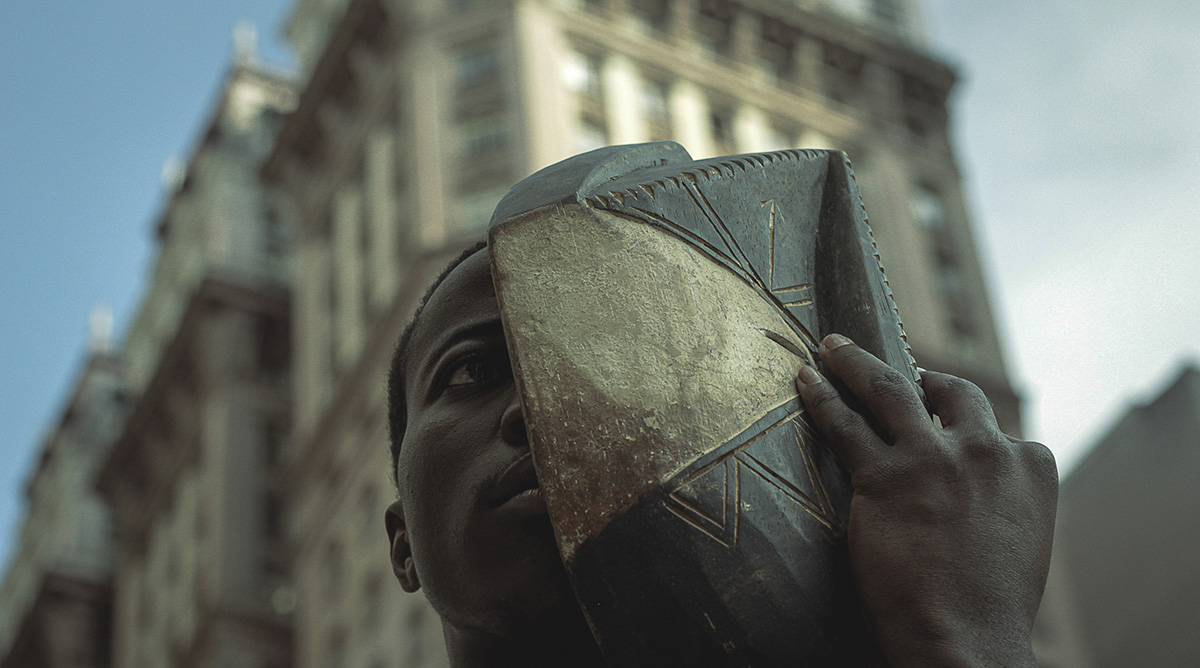
Lubanzadyo Mpemba
Sirenes Opacas de São Paulo
Vidéo expérimentale | mov | couleur | 5:42 | Angola, Brésil | 2019
Dans Sirenes Opacas de São Paulo habite la tension entre la ville en tant que béton anonyme qui occupe l'espace, et le monde en tant qu'expérience accumulée dans le corps. Mais la ville est aussi le monde et l'espace est aussi le corps, et chacun porte l'anatomie de souvenirs opaques. L'ampleur des bâtiments face à l'échelle humaine des passants est opaque pour la recherche d'endroits sûrs face à la verticalité imposante. Le geste comme détail du corps qui parle est opaque au bruit de l'abîme urbain. Le suspense inerte qui gratte le ciel est opaque pour les expériences qui se transfigurent à la recherche d'elles-mêmes. Et cette tension ne grandit pas et ne diminue pas, elle est constante et ce qui soutient le mouvement quotidien, et son absence, dans les rues de São Paulo.
Né en Angola en 1989. Artiste transdisciplinaire, Lubanzadyo Mpemba s’exprime dans l’art vidéo, la photo performance, performance et documentaire. Son travail comprend des mises en scène visuelles qui traitent de la migration, de la la gentrification, la violence institutionnelle et la mémoire collective. Il est diplômé en droit et a étudié la sociologie urbaine, Études curatoriales, film et peinture en mouvement.
Kita Bauchet : Les Gestes De Saint-louis - Doc. expérimental | 4k | couleur | 32:0 | Belgique, Sénégal | 2022
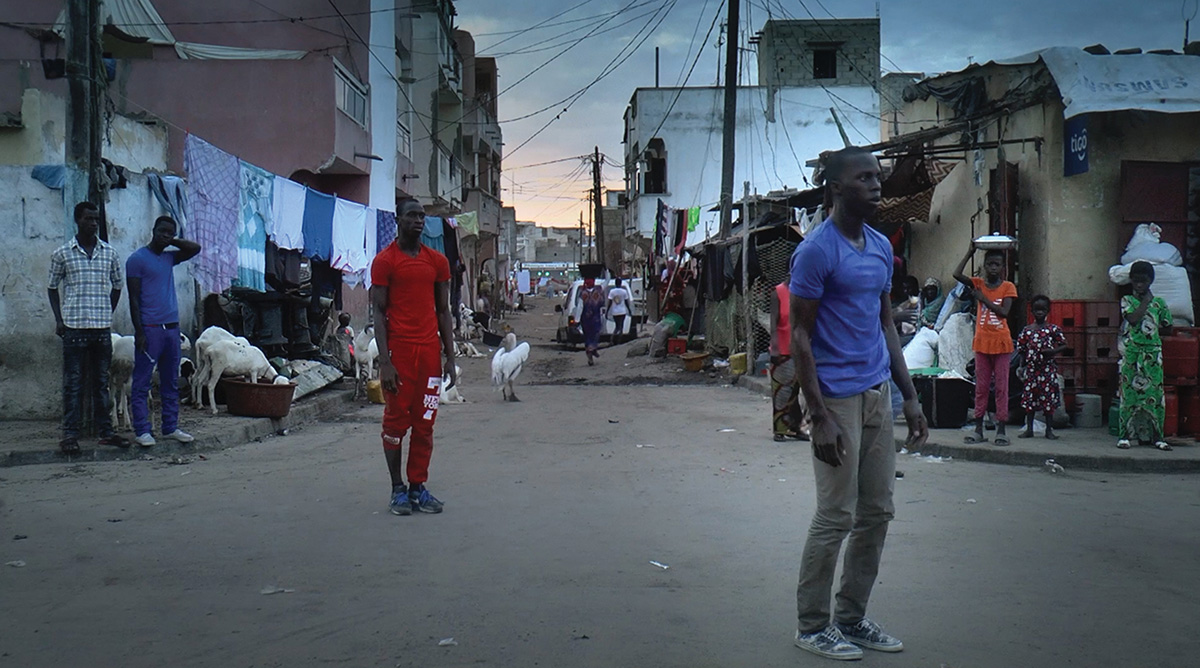
Kita Bauchet
Les Gestes de Saint-Louis
Doc. expérimental | 4k | couleur | 32:0 | Belgique, Sénégal | 2022
Fruit d’une collaboration entre la compagnie de danse contemporaine sénégalaise Diagn’art et les artistes belge et suisse Kita Bauchet et Stéphanie Pfister, « Les gestes de Saint-Louis » présente une esquisse subjective de la ville et du quotidien qui la rythme. Une infiltration chorégraphique de Saint-Louis à 2 danseurs et 2 caméras sur la musique de Siegfried Canto, qui met en lumière les énergies qui la font vibrer et célèbre la force créative de sa jeunesse.
Diplômée de l’INSAS, Kita Bauchet est une cinéaste belge. Après plusieurs courts métrages de fiction, elle réalise en 2009 La Fabrique de Panique, un long-métrage documentaire sur le film d’animation «Panique au village» de Vincent Patar et Stéphane Aubier, suivra en 2016 Une vie contre l’oubli sur l’œuvre du réalisateur André Dartevelle. En 2018, elle réalise Bains Publics, qui pousse les portes des « Bains du Centre » au cœur des Marolles, un quartier populaire de Bruxelles. Le film reçoit le prix France Télévisions du meilleur documentaire au Festival International de Films de Femmes à Créteil ainsi qu’au festival Brussels in Love, le Prix Birgit Wallborn de Docs en Goguette et une mention spéciale du jury au festival «Signes de vie à Clermont-Ferrand. En 2022, débute le parcours de « Les Gestes de Saint-Louis » mené en collaboration avec la compagnie de danse contemporaine Diagn’art, l’artiste suisse Stéphanie Pfister sur des musiques de Siegfried Canto.
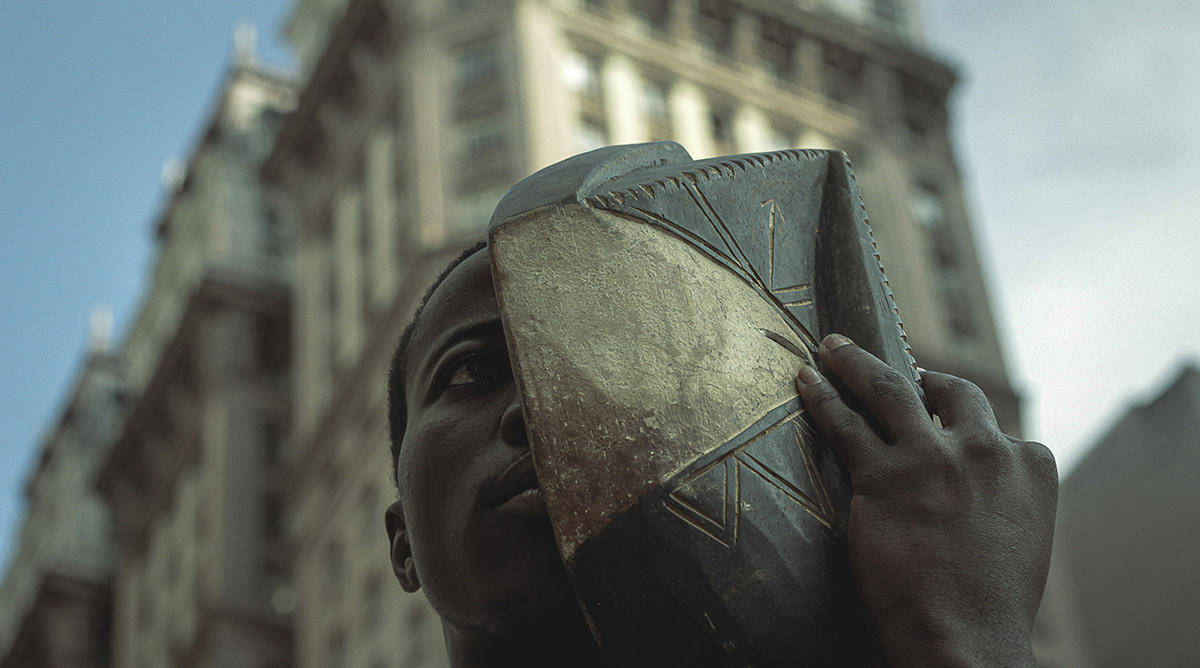
Au printemps 2022, Pip Chodorov filme, en tourné-monté, à Séoul. Le son est constitué d’un concert de jazz joué à Busan en hommage au centenaire de Jonas Mekas. Frédéric Moffet réimagine un film disparu de Warhol, tourné en 1963, « Dance Movie (aka Rollerskate) », dans lequel Fred Herko – danseur et cofondateur du Judson Dance Theater – faisait du patin à roulettes. Maddi Barber et June Crespo filment la rencontre de deux matériaux et de deux langages, le sculptural et le cinématographique. Par un déplacement entre la surface et le dessous des choses, deux processus éloignés sont rapprochés : les mains qui traversent et manipulent les sculptures en ciment, et le processus d'extraction et de transformation des pierres dans une carrière. Lubanzadyo Mpemba explore la tension et la relation entre la ville, São Paulo, et l'expérience corporelle de l’espace. Au Sénégal, à Saint-Louis, Kita Bauchet collabore avec Stéphanie Pfister et la compagnie de danse contemporaine sénégalaise Diagn’art pour présenter une esquisse subjective de la ville et du quotidien qui la rythme.
De 14h à 17h | Auditorium
"Eldorado"
Caroline Déodat : Sous Le Ciel Des Fétiches - Doc. expérimental | 0 | couleur | 16:53 | France, Maurice (Île) | 2023

Caroline Déodat
Sous le ciel des fétiches
Doc. expérimental | 0 | couleur | 16:53 | France, Maurice (Île) | 2023
Sous le ciel des fétiches répond à la difficulté de montrer l’ubiquité des archives coloniales dans l’histoire du séga mauricien. Née pendant la colonisation et l’esclavage au sein de communautés de fugitif.ves, cette pratique de danse et de poésie chantée survit aujourd’hui principalement sur les scènes touristiques des hôtels. Travaillant la relation d’emprise avec le passé colonial, le film réinvestit les spectres d’un regard qui hante. Comment projeter – littéralement faire sortir de soi – le récit de nos agresseurs ?
Caroline Déodat est artiste et chercheure. Docteure en anthropologie de l'EHESS, elle a été formée à l'École des Beaux-Arts de Lyon dans le cadre du post-diplôme Art. Par le biais de films et d'installations, elle explore les dimensions spectrales de l'image en mouvement dans une circulation entre fiction et ethnographie. De ses obsessions pour les processus d'archivage et d'aliénation, l'histoire et les mythes de la violence, elle exhume des récits par la convocation de mémoires hantologiques, d'archives en différé et d'images orales. Son travail a été montré au Musée Reina Sofía à Madrid, dans les Résonances de la Biennale d'art contemporain de Lyon, à la Fondation Sandretto Re Rebaudengo à Turin, et prochainement au Salon de Montrouge, au Ji.hlava International Documentary Film Festival à Prague, au Magasin à Grenoble et à l'IFAN à Dakar.
Elise Florenty, Marcel Türkowsky : Zapotitland - Doc. expérimental | 0 | couleur | 47:0 | France, Mexique | 2023

Elise Florenty, Marcel Türkowsky
Zapotitland
Doc. expérimental | 0 | couleur | 47:0 | France, Mexique | 2023
Entre fiction fantasmagorique et investigation historique, le film suit la rêverie d’un jeune mexicain vivant à Mexico City, qui le fait s'aventurer au plus profond de la plus grande forêt de cactus au monde. C'est là, sous les traits imaginaires d'un chasseur de cactus allemand, qu'il entrevoit les histoires de convoitise et de mort qui hantent cet extraordinaire et étrange "eldorado végétal".
De 17h à 20h | Auditorium
"Reconstitution"
Che-yu Hsu : The Making Of Crime Scenes - Doc. expérimental | 0 | couleur | 21:56 | Taiwan, France | 2022
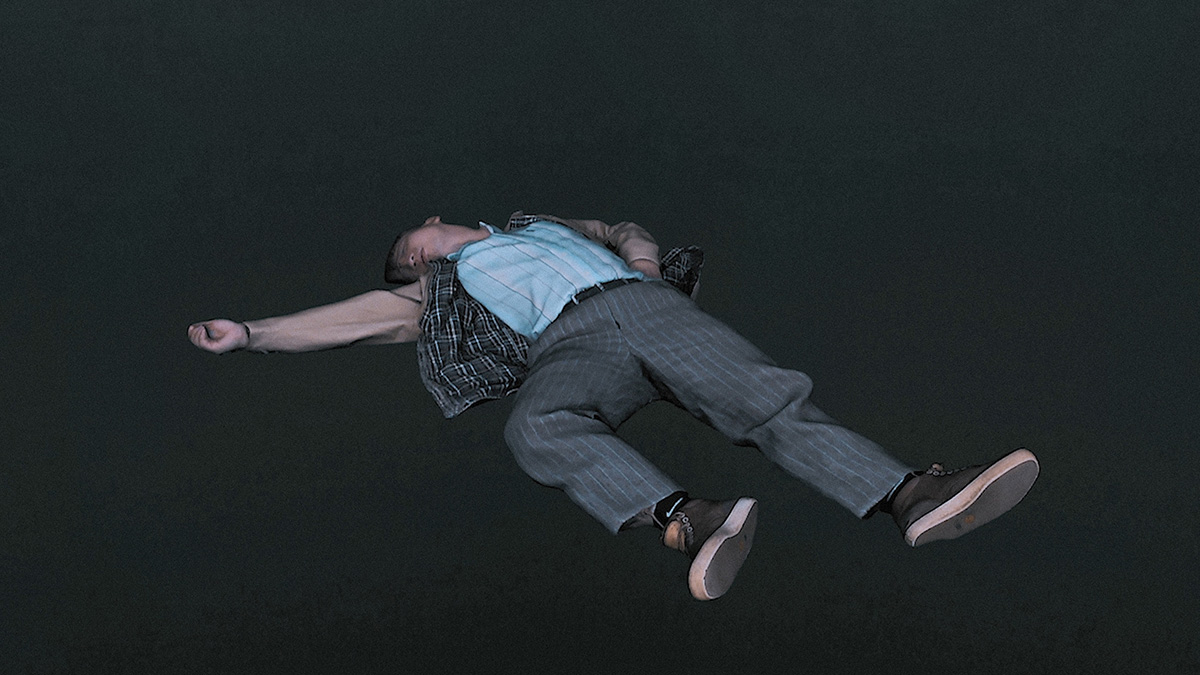
Che-yu Hsu
The Making of Crime Scenes
Doc. expérimental | 0 | couleur | 21:56 | Taiwan, France | 2022
Starting from a gunman involved in a murder case, I seek to reflect the collective unconscious within society and politics through the gunman's multiple peculiar roles—a filmmaker, a killer, a gangster, and a patriot. In 1984, when Taiwan was still under Martial Law, a Taiwanese American writer Henry Liu was shot to death in his own house in the US by a Taiwanese assassin. Afterward, due to the intervention and investigation of the US government authorities, this case was eventually confirmed to be a political murder jointly committed by the Military Intelligence Bureau and the biggest mafia United Bamboo Gang in Taiwan, as the government paid the mafia to kill Henry Liu. The protagonist of this work, Wu Dun, is the assassin who fired the shot at the time. After the case was exposed, the Taiwanese authorities were pressured by the US, and Wu Dun was thus sentenced to life imprisonment. However, he was given amnesty and discharged from prison after six years. After he got out of prison, Wu Dun remained an important member of the United Bamboo Gang, and he established a film company as a producer with the support of his mafia influence, making several “wuxia films” – refers to specific traditional Chinese swordplay films. In this work, I revisited the film studio that was once used by Wu Dun and is now deserted to recompose the fragments of the political assassination and the scenes of wuxia films, and I cooperated with a 3D scanning team—their job is to provide forensic scanning service at crime scenes—to make a digital double of Wu Dun.
Hsu Che-Yu (b. 1985) is an artist based in Taipei and Amsterdam. Previously, Hsu obtained a master’s degree from the Graduate Institute of Plastic Arts, Tainan National University of the Arts (Taiwan). Since 2019, he had participated in the residency program in HISK (Ghent, 2019–2020) and Le Fresnoy – Studio national des arts contemporains (Tourcoing, 2020–2022). In 2022, he begins his two-year art residency in Rijksakademie in Amsterdam. Hsu has solo exhibitions at Liang Gallery (Taipei, 2022), Vanguard Gallery (Shanghai, 2020), Taipei Fine Arts Museum (2015), Kuandu Museum of Fine Arts (Taipei, 2012), SAT Society for Arts and Technology (Montreal, 2012). He has participated in the Theater der Welt (Frankfurt, 2023), Bienal de São Paulo (2021), Seoul Mediacity Biennale (2021), Sonsbeek20?24 Quadrennial public program (2021), Techniques of Becoming (Württembergischer Kunstverein, Stuttgart, 2021), VIDEONALE.18 (2021), Shanghai Biennale (2018), London Design Biennale (2018), Asian Art Biennial (Taichung, 2017), and film festivals IFFR International Film Festival Rotterdam (2023, 2022, 2020, 2018), NYFF New York Film Festival (2020)and Rencontres Internationales Paris/Berlin (2020, 2019, 2018). He was awarded the Videonale Award of the Fluentum Collection (Kunstmuseum Bonn, 2021), the Loop Barcelona Video Art Production Award (Han Nefkens Foundation, 2020), the Taishin Annual Grand Prize (Taishin Bank Foundation for Arts and Culture, 2016), and was a finalist for HUGO BOSS ASIA ART (2019).
David Kelley : The Book Of The Dead - Doc. expérimental | 4k | couleur | 19:42 | USA | 2023

David Kelley
The Book of the Dead
Doc. expérimental | 4k | couleur | 19:42 | USA | 2023
The Book of the Dead is an experimental documentary meditating on the American poet Muriel Rukeyser’s poem about the Gauley Tunnel tragedy. In the 1930s in West Virginia, nearly 2,000 primarily Black migrant workers were sickened or killed by silicosis, a lung disease caused by breathing silica dust. Rukeyser travelled to West Virginia to meet workers and their families, in some cases, appropriating their words directly. The film revises her white characters to a predominately Black cast — more accurately reflecting the insidious racism prevalent in American society at the time. The film appropriates interviews with the poet, her unfinished screenplay, and worker’s testimony to U.S. Congress. Using actors, theatrical sets, and 3D generated backgrounds, the film produces a multisensory experience of Rukeyser’s process and the industrial tragedy. Unable to travel during the Covid-19 pandemic, Kelley designed the West Virginia mining sets in Unreal, a 3D gaming software and filmed actors at a green screen studio near his home in Los Angeles. The work's theme of failure to breathe poignantly resonates with the Covid-19 pandemic, and the final words turned protest chant of George Floyd: I can't breathe.
David Kelley (Born in Portland Oregon. Lives in Los Angeles California.) Kelley is an artist working with photography, video, and installation. His recent projects draw attention to the effects of global capitalism, resource extraction, and shifting physical and political landscapes. Influenced by a range of visual traditions, Kelley draws upon elements of experimental documentary, ethnography, performance, and avant-garde cinema. By working at the intersection of these strategies, he encourages an understanding of his subjects that is simultaneously direct and speculative. His work has been shown in galleries and museums nationally and internationally. Recent exhibitions include the Museum of Modern Art in New York and Fotofest Biennial, Houston. Other exhibitions include Commonwealth and Council in Los Angeles, The Bank in Shanghai, the de Cordova Biennial in Boston, BAK in Utrecht, MAAP space in Australia, and the Jim Thompson Art Center in Bangkok. Kelley received a Master of Fine Art from the University of California, Irvine, and was a 2010 -11 resident at the Whitney Museum of American Art Independent Study Program. He is currently based in Los Angeles, California, and is an Associate Professor of the Practice at the Roski School of Art and Design, University of Southern California.
Mario Pfeifer : Cell 5 – A Reconstruction - Documentaire | 4k | noir et blanc | 43:0 | Allemagne, Royaume-Uni | 2023

Mario Pfeifer
Cell 5 – A Reconstruction
Documentaire | 4k | noir et blanc | 43:0 | Allemagne, Royaume-Uni | 2023
On January 7th 2005 an asylum seeker, shackled at his hands and feet, dies in a fire in cell number five of a police station in Dessau, Germany. With “Cell 5” Mario Pfeifer reconstructs the case of Oury Jalloh’s death using legal documents, testimonies, audio-visual archives, and collaborates with the forensic expert Iain Peck to reproduce an accurate fire experiment. All in an attempt to answer: how could Oury Jalloh burn to death?
Mario Pfeifer ist a PRIX EUROPA nominated producer, director and visual artist whose interests intersect between political, social and anthropological issues. Mario works closely with communities, establishing intimate relationships from which he conceives his projects in collaboration with his protagonists. He graduated from the art academy Städelschule in Frankfurt am Main, studied with Stan Douglas at the University of the Arts in Berlin and was a Fulbright scholar in 2008 at the California Institute of the Arts, Mario is a recipient of DAAD fellowships in 2010 and 2012. Mario is an alumni of the European Creator’s Lab (2021), the Documentary Campus Masterschool (2019), the Feature Expanded Masterclass (2017), and a Berlinale Talent Campus alumni (2009). Mario Pfeifer’s installations were presented at the Power Plant Toronto; Museum of Modern Art, Berlin; Los Angeles County Museum of Art [LACMA], Los Angeles; MMK Museum fu?r Moderne Kunst Frankfurt am Main; Bundeskunsthalle Bonn; Neues Museum Nu?rnberg; Kunsthalle Winterthur; N.B.K. Neuer Berliner Kunstverein; Fotomuseum Winterthur; KOW, Berlin; Beursschouwburg, Brussels; MAAT Museum of Art, Architecture and Technology, Lisbon; KW Kunst-Werke, Berlin; CCA,Lagos; and his film presented at international Film Festivals in Amsterdam, Auckland, Berlin, Cologne, London, Madrid, Paris, Oberhausen, New York, Seoul and Toronto. He participated in the 3rd Montevideo Biennal (2016), the 11th Bienal do Mercosul (2018), the 10th Berlin Biennale (2018) as well as the 4th Mediterranean Biennale (2020). His works are hold in public and private museum collections at the Getty Center Los Angeles, Collection of Contemporary Art of the Federal Republic of Germany, Pinakothek der Moderne Munich, MMK Museum of Modern Art Frankfurt am Main, Fotomuseum Winterthur et.al. Mario has lectured and directed Masterclasses in Brazil, Chile, Czech Republic, Germany, India, Mexico, Poland, the U.K. and in the US. www.blackboardfilms.net/people

"Eldorado" - De 14h à 17h
Au départ de l’histoire du séga mauricien – une pratique de danse et de poésie chantée, née pendant la colonisation et l’esclavage au sein de communautés de personnes fugitives –, qui survit aujourd’hui principalement sur les scènes touristiques des hôtels, Caroline Déodat travaille sur la relation d’emprise exercée par le passé colonial, réinvestissant les spectres d’un regard qui hante.
Entre fiction fantasmagorique et investigation historique, Élise Florenty et Marcel Türkowsky suivent la rêverie d’un jeune mexicain vivant à Mexico City, qui s'aventure au plus profond de la plus grande forêt de cactus au monde. C'est là, sous les traits imaginaires d'un chasseur de cactus allemand, qu'il entrevoit les histoires de convoitise et de mort qui hantent cet extraordinaire et étrange « eldorado végétal ».
"Reconstitution" - De 17h à 20h
Che-Yu Hsu reconstitue l’histoire de Wu Dun, tueur à gage qui a assassiné en 1984 un écrivain américain d’origine taïwanaise et qui, à sa sortie de prison, est devenu producteur de cinéma.
A travers les multiples rôles du tireur – cinéaste, tueur, gangster et patriote, il propose ainsi une réflexion sur l'inconscient collectif social et politique.
David Kelley s’inspire du poème de Muriel Rukeyser sur une catastrophe industrielle survenue dans les années 1930, en Virginie-Occidentale, où près de 2 000 travailleurs migrants, essentiellement noirs, ont été malades ou tués par la silicose, une maladie qui affecte les poumons.
Mario Pfeifer reconstitue la mort d'Oury Jalloh dans l'incendie de sa cellule au commissariat de Dessau, en Allemagne, le 7 janvier 2005. Demandeur d’asile, il avait les pieds et mains liés. Avec l’aide d’un expert médico-légal, la cellule est reproduite à l’échelle 1:1, ainsi que l’incendie.
Forum
Haus der Kulturen der Welt | Safi Faye Hall
John-Foster-Dulles Allee 10, 10557 Berlin / Métro: lignes S5, S7, S9, S75, station: Hauptbahnhof
Entrée libre
Artist talks
Détail de la séance annoncé prochainement
Projection
Haus der Kulturen der Welt | Safi Faye Hall
John-Foster-Dulles Allee 10, 10557 Berlin / Métro: lignes S5, S7, S9, S75, station: Hauptbahnhof
Entrée libre
"Queer sismic"
Isabell Spengler, Antonia Baehr, Jule Flierl - Filmed in a visual installation by Nadia Lauro : Die Hörposaune - Fiction expérimentale | 0 | couleur | 29:38 | Allemagne | 2022

Isabell Spengler, Antonia Baehr, Jule Flierl - Filmed in a visual installation by Nadia Lauro
Die Hörposaune
Fiction expérimentale | 0 | couleur | 29:38 | Allemagne | 2022
Die Hörposaune (The Hearing Trombone) film / installation by Isabell Spengler, Antonia Baehr, Jule Flierl, Germany 2022 filmed in a visual installation by Nadia Lauro short synopsis Through a floating camera motion, the film invites us to enter a world with its own logic, passing through sensitive membranes, liquefied borders and openings between inner and outer spaces. Here we attend a reading circle or vocal performance in memory of the counter tenor and queer icon Klaus Nomi, one of the first public figures to die within the AIDS pandemic. Daydream-like, as if to save them from oblivion, the film delves into the guts of fantastical, queer body imaginations - with spit, panting, oral sounds, singing, and vulva-like paper flower arrangements, whereby anatomical representations are reinterpreted.
Isabell Spengler (director) is a film/video artist from Berlin. In her films, installations and performances she analyzes and mediates diverging constructions of realities, imaginary worlds and their representation. Since 2005 she has created a series of conceptual Expanded Cinema works in dialogues with other artists. /www.isabellspengler.net Antonia Baehr (director) is a choreographer living in Berlin. Her pieces explore, among other things, the fiction of the everyday and the theater. She has worked with scores for many years - as a way to connect and collaborate. Baehr is producer of horse whisperer and dancer Werner Hirsch (performer in Die Hörposaune). /www.make-up-productions.net Jule Flierl (director) is a dance and voice artist from Berlin. She develops practices that conceive of the voice as a dancer. She revives the legacy of Valeska Gert, avant-garde dancer from 1920's Berlin, who first conceptualized the term ToneDance: to dance with one's voice. Her practice unsettles the relationship between seeing and hearing. /juleflierl.weebly.com Nadia Lauro (visual installation) is a visual artist and designer based in Paris, who works across contexts including scenic spaces, landscape architectures, museums. She conceived set designs, environments and visual installations with strong dramaturgical power, thus generating new ways of seeing and being together. /https://nadialauro.com
Karel Tuytschaever : Easy Tiger - Fiction | 0 | couleur | 60:0 | Belgique, Pays-Bas | 2022

Karel Tuytschaever
Easy Tiger
Fiction | 0 | couleur | 60:0 | Belgique, Pays-Bas | 2022
Un moment inattendu lors d’une séance avec un patient confronte un psychologue à son propre monde intérieur. Aliéné par l’isolement de sa vie citadine apparemment parfaite, le psychologue se heurte à une incapacité à comprendre et embrasser sa propre nature humaine. Son désir irrépressible pour son client l’amènera à découvrir qui il est vraiment.
Karel Tuytschaever (BE, °1985) graduates in 2007 from the Royal Conservatoire Antwerp in the Drama, an acting education led by Dora van der Groen. To date, he works as a freelance performer for theatre, ?lm and television series. You can also hear him in voice work for TV and radio. ? Since 2008, he is a lecturer at the Bachelor programs in Drama and in Contemporary Dance at the Royal Conservatoire Antwerp / AP University College and is a member of the dance training mentor team. He is regularly solicited as a coach and hosts workshops and masterclasses organized by theatre studio Nest, OPENDOEK, University of Antwerp, deDansPunt, Let's Go Urban Academy, scenography education KASKA, Zuidpool, Royal Academy of Fine Arts Antwerp, The Amsterdam School of the Arts & Fontys School of the Arts. ? ?In 2015 BARRY is founded on the need to create an environment where Karel’s personal hybrid own work can be developed, be made and be shared. He is rethinking of how to approach the performing arts and lens-based media in pursuit of a more authentic, intimate and honest embodiment within the arts. Since 2019, BARRY (BE) has a long-term collaboration together with DansBrabant (NL). ? ?In 2020, he starts as a researcher in the arts at the Royal Academy of Fine Arts Antwerp, with the support of the Royal Conservatoire Antwerp. His project The transparent body (2020 - 2022) is a practice-based search for genuine embodiment in current 2D and 3D portrait arts. How is a visual artist actually looking at the human figure? It is a tipping point in which he grafts his vision of what sincere embodiment within performative art is, and can be, on to the visual arts. Thereafter, Karel starts his doctoral research in the arts; Als de kunstenaar zijn beeld inslikt (When the artist swallows his image) (2022-2026) is an in-depth trajectory which digs into the seldom explored domain of embodied knowledge within the relationship between the maker and their image of somebody. He explores the role that the maker's unique physicality plays in depicting someone else. Throughout this journey, he looks at ways to arrive at more reciprocal and sustainable relationships between different artistic disciplines, finds new inter-medial forms, further develops his inclusive vision and explores its scope. Of great importance to him is the cross-pollination interaction between his performing, his lecturing, and his research and work as a maker. His fascination for embodiment and physicality within the arts plays a key role in this triangle.

Dans un monde doté de sa propre logique, où les corps semblent en apesanteur, Isabell Spengler, Antonia Baehr et Jule Flierl nous font assister à une performance vocale à la mémoire du contre-ténor et icône queer Klaus Nomi, l'une des premières figures publiques à mourir du sida. À la manière d'un rêve éveillé, comme pour les sauver de l'oubli, le film plonge dans les entrailles d’un imaginaire corporel fantastique et queer – chuintements, halètements, vocalises et chants articulent les balbutiements d’un langage, au milieu d’arrangements de fleurs en papier ressemblant à des vulves, où les représentations anatomiques se dissolvent et sont réinterprétées. Karel Tuytschaever filme le moment où la relation entre un psychologue et son patient bascule. Confronté à son propre monde intérieur, aliéné par l’isolement de sa vie en apparence parfaite, le psychologue se heurte à une incapacité à comprendre et à embrasser sa propre nature humaine.
Projection
Haus der Kulturen der Welt | Safi Faye Hall
John-Foster-Dulles Allee 10, 10557 Berlin / Métro: lignes S5, S7, S9, S75, station: Hauptbahnhof
Entrée libre
"Caméra objective"
Juan Desteract : Souviens-toi - Vidéo expérimentale | mov | noir et blanc | 1:31 | France, Argentine | 2022

Juan Desteract
Souviens-toi
Vidéo expérimentale | mov | noir et blanc | 1:31 | France, Argentine | 2022
La persistance d’une image fatidique et le besoin de s'y accrocher impliquent le dédoublement d’un souvenir. Ce dernier se trouve ainsi suspendu entre les multiples versions d’un même évènement, entre les représentations d’un passé et un présent déjà vécu, entre figuration et abstraction, entre mouvement et immobilité, entre film et photographie. Des impressions intrusives d'autres vies se superposent au souvenir, nous exposant ainsi à une réalité surveillée où nous nous demandons qui voit et que voir.
Juan Desteract est né à Saint-Germain-en-Laye (France) en 1997. Il vit actuellement à Buenos Aires, en Argentine. Il a étudié le design graphique à l’Université de Buenos Aires. Il a poursuivi sa formation en photographie et arts visuels au cours de divers séminaires, ateliers et résidences artistiques à Buenos Aires. Parallèlement, il s'est formé en écriture, composition musicale puis en improvisation musicale. A partir de 2021, il participe à des expositions collectives dans des espaces artistiques et des musées d'art contemporain en Argentine, au Chili, Uruguay, Espagne et en France. Son travail associe des disciplines diverses telles que la post-photographie, l'audiovisuel expérimental, le design graphique et l'improvisation musicale, en se focalisant sur certains traits distinctifs du cinéma structurel et du réemploi d’archives. Depuis 2020, Juan travaille dans le domaine du design graphique en tant que Professeur à l’Université de Buenos Aires et en tant que graphiste au Musée d'art moderne de Buenos Aires.
Bill Morrison : Incident - Doc. expérimental | 0 | couleur | 29:49 | USA | 2023

Bill Morrison
Incident
Doc. expérimental | 0 | couleur | 29:49 | USA | 2023
INCIDENT reconstructs a police shooting in Chicago in 2018, reassembling the event and its immediate aftermath from a variety of viewpoints, including surveillance, security, dashboard, and body-worn cameras as a continuous, synchronized split-screen montage.
Bill Morrison has been called “the poet laureate of lost films” (New York Times, 9/22/21). He makes films that reframe long-forgotten moving images. He has premiered feature-length documentary films at the New York, Sundance, Telluride and Venice film festivals. Morrison had a mid-career retrospective at MoMA in 2014. His found footage opus Decasia (2002) was the first film of the 21st century to be selected to the Library of Congress’ National Film Registry. Dawson City: Frozen Time (2016) was named one of the best films of year by more than 100 critics, and among the best of the decade (2010s) by the Associated Press, Los Angeles Times, and Vanity Fair, among others. In 2021 Morrison became a member of the documentary branch of the Academy of Motion Pictures Arts and Sciences.
Sirine Fattouh, Sandra Fatté, Victor Bresse, Chrystel Élias : Behind The Shield - Vidéo | 0 | couleur | 57:42 | Liban | 2022
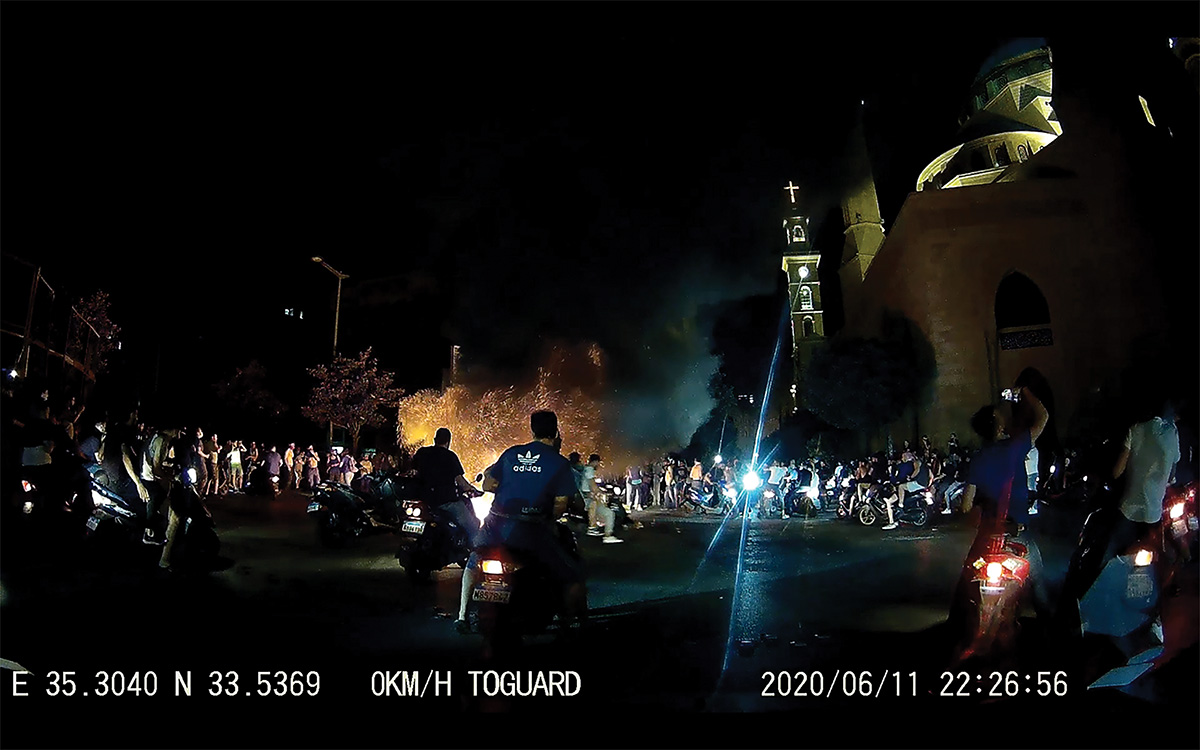
Sirine Fattouh, Sandra Fatté, Victor Bresse, Chrystel Élias
Behind the Shield
Vidéo | 0 | couleur | 57:42 | Liban | 2022
Filmée au Liban par une Dash Cam entre le 18 octobre 2019, date à laquelle ont débuté des soulèvements populaires, et l’après-explosion du 4 août 2020, les images rendent compte des bouleversements politiques, sociaux et économiques que traversait le Liban durant cette période. Dans la première moitié du film, on assiste à l’engouement général des Libanais au début des manifestations de 2019. Mais au fil des mois, on assiste à l’exacerbation des tensions entre les manifestants et les forces de l’ordre. Avec les différentes étapes du confinement de la crise sanitaire de 2019-2020, les manifestations vont cesser et les rues se vider. La deuxième partie est essentiellement centrée sur le soir de l’explosion du 4 août 2020 où l’on découvre les dégâts, le chaos et la stupéfaction des habitants dans les rues de Beyrouth.
Artiste, chercheure et enseignante à l’École Supérieure d’Art d’Avignon, Sirine Fattouh est née en 1980 à Beyrouth. Les déplacements constants dus aux guerres et aux conditions socio politique ont forgés chez elle un sentiment d’exil intérieur qui l’amènent à explorer son environnement dans toute sa complexité et à y faire émerger des histoires d’individus dont la parole est marginalisé. Fattouh s’intéresse aux histoires non officielles celles qui sont considérées comme anecdotiques. Elle puise son inspiration dans son passé et son présent afin d’explorer la relation complexe qu’elle entretient avec son pays d’origine et les conséquences des conflits et des guerres sur la vie quotidienne des gens. Sirine Fattouh a fait ses études à Paris 1 Panthéon Sorbonne où elle a obtenu en 2015 une thèse en Arts plastiques et Sciences de l’art. Entre 2004 et 2006, elle a étudié à l’école nationale supérieure d’arts de Paris Cergy et a obtenu son DNSEP. Entre 2005 et 2021, elle enseigne les arts plastiques et l’histoire de l’art dans plusieurs universités en France et au Liban. En 2010 elle travaille pendant une année au centre Pompidou à Paris en tant qu’attachée de conservation pour le programme art et mondialisation auprès de Catherine Grenier. Ses œuvres ont été exposées dans de nombreuses galeries et institutions artistiques dont le Centre d’Art Pasquart à Bienne, le MAXXI à Rome, la fondation Ricard à Paris, le Centre Pompidou à Metz, le Mucem à Marseille, le Beirut Art Center, Kaaï Studio à Bruxelles, ZKM à Karlsruhe, Brick Lane à Londres, la Villa Savoye du Corbusier à Poissy, l’Institut du monde arabe à Paris et la Biennale de Thessalonique en Grèce.

Juan Desteract interroge le dédoublement du souvenir face à la persistance de l’image. A partir d’une pluralité de sources d’images enregistrées – caméra de surveillances, caméras embarquées, caméras piéton –, Bill Morrison réassemble les images d’une fusillade policière – un jeune homme noir tué par un policier – survenu à Chicago en 2018. Au Liban, Sirine Fattouh reprend les images filmées par une Dash Cam installée dans sa voiture, entre le 18 octobre 2019 – date à laquelle ont débuté des soulèvements populaires –, le 4 août 2020 et les jours qui ont suivi l’explosion. Les images rendent compte des bouleversements politiques, économiques et sociaux que traverse le Liban.
Projection
Haus der Kulturen der Welt | Safi Faye Hall
John-Foster-Dulles Allee 10, 10557 Berlin / Métro: lignes S5, S7, S9, S75, station: Hauptbahnhof
Entrée libre
"Le temps de l'innocence"
Thomas Mohr : St. Marien - Vidéo expérimentale | mov | couleur | 10:58 | Pays-Bas, Allemagne | 2023

Thomas Mohr
St. Marien
Vidéo expérimentale | mov | couleur | 10:58 | Pays-Bas, Allemagne | 2023
What role does childhood play in developing experience? How are personal present and past connected in the process of aging? The longing for the places of the personal past was the reason for a trip to Flensburg in 2001 a few weeks before 9/11. More than 2000 photos were taken in just a few days. It was only many years later that the negatives were digitized and it was only more than 20 years later that the need to process these recordings into a composition arose. The turbulent German-Danish history on both sides of today's border and the places of childhood come together in a whole where the past merges into one experience in the now. 3636 images are processed frame by frame in the first 3 movements. Each movement is containing 24 sequences of stills. The amount of images in the stills increases from 4 to 625 images simultaneously. After the first 3 movements the process is repeated towards the infinite to end in structures similar to the layers one would find in rock formations.
Thomas Mohr is exploring processes of perception and memory systematically in performance, painting, video, installations. From 1985 onwards a growing archive containing more then 600000 pictures regarding a wide range of events of transition from a collective meaning to very personal moments. Distributed by LIMA. Sreenings at various festivals since 2009: IFFR/Rotterdam, JMAF/Tokio, Ars Electronica, Transmediale Berlin, IFF Japan, NeMaf/Seoul, IKFF/Hamburg, Jihlava IDFF, HAFF/Utrecht, Media Art Biennale Wro, Rencontres Paris/Berlin, EMAF, Atonal Berlin, Projects with music at Stedelijk Museum, Orgelpark Amsterdam, Edith Russ Haus Oldenburg, CCAM / Scène Nationale de Vandœuvre. Michael Bonaventure , based in Edinburgh & Amsterdam, is composer, organist and collaborator in new and experimental music projects; Extended cyclic works predominate in his output including huge body of electronic and electro-acoustic pieces as well as instrumental and organ music. From a sonic universe deriving its inspiration from mysticism and ritual, natural and imaginary worlds, astronomical and supernatural phenomena.
Maximilian Bungarten : The Age Of Innocence - Fiction expérimentale | 0 | couleur | 20:0 | Allemagne | 2022
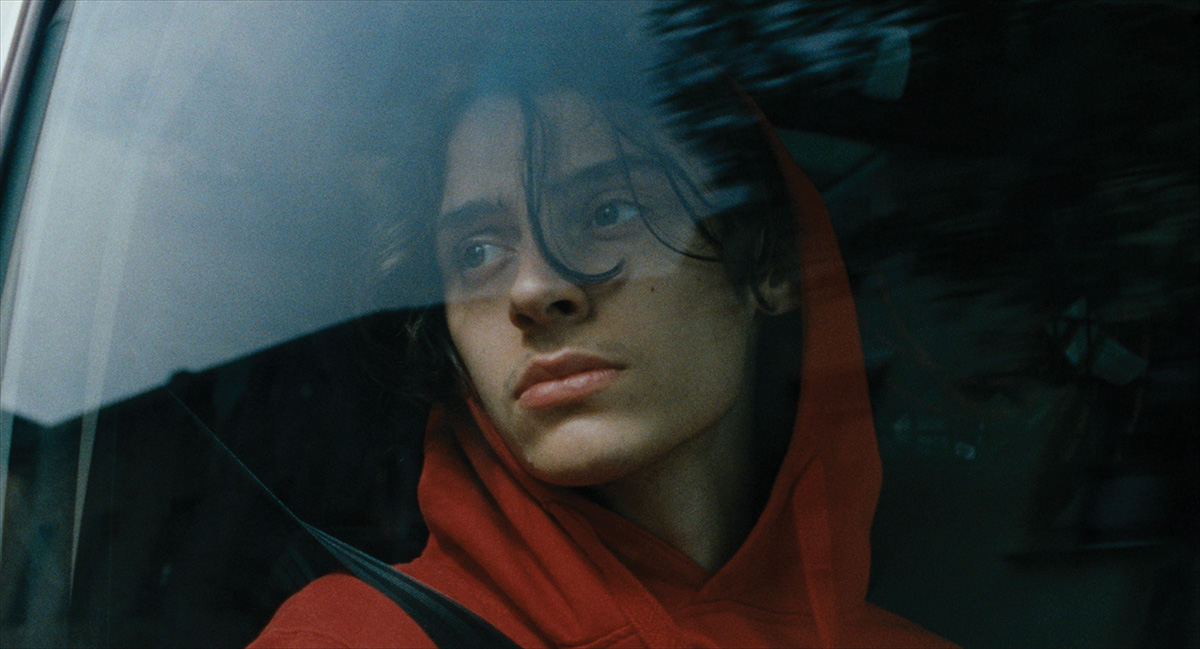
Maximilian Bungarten
The Age of Innocence
Fiction expérimentale | 0 | couleur | 20:0 | Allemagne | 2022
Lev works at a construction site in a new suburban residential area in Western Germany. But things change, friends will leave and the forest becomes a place of desire
Maximilian Bungarten born in 1993, in North Rhine-Westphalia, studies Documentaryfilm at HFF Munich and Université Paris VIII. Together with Camille Tricaud and Felix Herrmann, he founded the production company Benedetta Films. His award-winning short films have screened at numerous international film festivals including ISFF Clermont-Ferrand and art institutions like Schirn Kunsthalle Frankfurt.
Matti Harju : Ekstaasi - Fiction expérimentale | mov | couleur | 9:48 | Finlande | 2022

Matti Harju
Ekstaasi
Fiction expérimentale | mov | couleur | 9:48 | Finlande | 2022
Set in the darkest time of the year, a feverish and delirious film about a small and ever-shrinking island – the Ecstasy – located somewhere between the search for pleasure and the inherently destructive powers of capitalism.?
Matti Harju has screened work at the Rotterdam, Locarno, Kurzfilmtage Oberhausen, Torino, BFI London, Edinburgh, AFI FEST Los Angeles and Clermont-Ferrand film festivals among others. He studied film directing at the National Film and Television School (NFTS) in the UK and holds an MFA from the Finnish Academy of Fine Arts. His second feature, Fury, is currently in post-production.
Yentl De Baets : Burning Clouds - Fiction expérimentale | 0 | couleur | 17:24 | Belgique | 2021

Yentl De Baets
Burning Clouds
Fiction expérimentale | 0 | couleur | 17:24 | Belgique | 2021
A passing meteorite connects a roaming young woman, a burned-out factory worker and an unemployed young man during a long winter night. A portrait of the night and the people in it.
Yentl De Baets is a Ghent based director and cinematographer. He graduated at the film department of the KASK School of Arts in 2021 with his short experimental fiction film 'Burning Clouds'.
Julian Rabus : Magma - Fiction expérimentale | 0 | couleur | 14:0 | Suisse, Allemagne | 2022
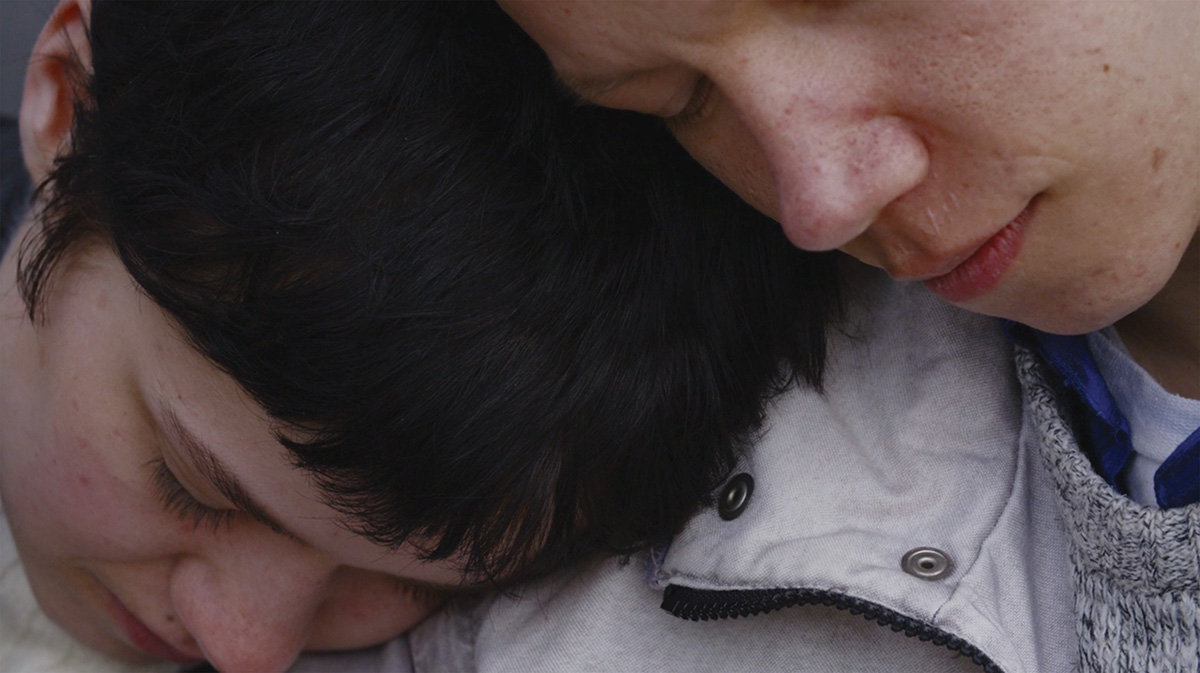
Julian Rabus
Magma
Fiction expérimentale | 0 | couleur | 14:0 | Suisse, Allemagne | 2022
MAGMA is a method driven and improvisation based film project produced and directed by Julian Rabus. The shoot consists of long situations that last up to several hours and are filmed with up to four cameras. Actors are given space to behave without dramatic functions. Following intuitions opens a way to engage with certain psychological patterns and find narrative structures, which then manifest themselves in the editing and the viewer’s perception. In the film couples and peer groups try to find their way in everyday situations: they perform, reveal themselves, make themselves vulnerable, are insecure, fall in love or pretend to the others.
Julian Rabus works as a director and producer in the field of media art and narrative film since 2016. After he graduates from Academy of Fine Arts Munich in the class of Julian Rosefeldt he studied Film Directing at the California Institute of the Arts in Los Angeles and moved back to his hometown Berlin to finish his studies at the University of Arts in the Narrative Film class of Thomas Arslan.
Francisco Dias : Litoral - Fiction | 4k | couleur | 13:9 | Portugal | 2023

Francisco Dias
Litoral
Fiction | 4k | couleur | 13:9 | Portugal | 2023
One winter night, the sea threatens once again the tower block where two neighbours live. The next day, their children come to prompt them to leave everything behind.
Francisco Dias was born in 1999 in Porto, Portugal. In 2019, he lived and studied in Norway. In 2020, he completed the Bachelor's in Sound and Image and in 2023 the Master's in Cinema at Universidade Católica Portuguesa, having obtained scholarships for both courses. Rooted in his culture and personal experiences, his films focus on coming of age, human relationships and landscape. "I Don't Like 5 PM", winner of the Take One! competition at Curtas Vila do Conde International Film Festival, and "Coast" stand out in his filmography.
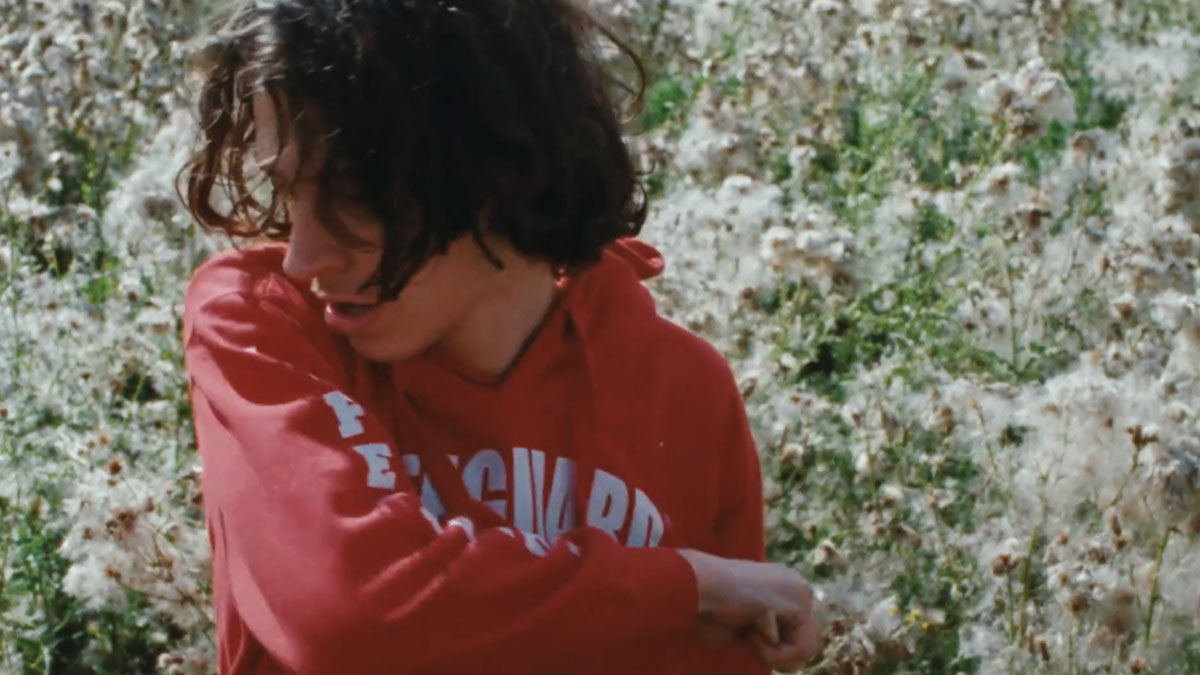
Thomas Mohr voyage sur les lieux de son enfance, en 2001, où il prend des milliers de photos en quelques jours. Vingt ans plus tard, 3636 images deviennent une composition de structures, similaires à celles que l’on trouve dans les formations rocheuses. Maximilian Bungarten observe la relation entre deux jeunes hommes, dans une zone résidentielle de la banlieue d’une ville allemande. Matti Harju raconte l’histoire d’une transaction d’Ecstasy, promesse toujours amenuisée, située quelque part entre la recherche du plaisir et le pouvoir intrinsèquement destructeur du capitalisme. Yentl De Baets fait un portrait de la nuit et des gens qui l’habitent. Trois personnes seules se croisent, dans le paysage vide d’une ville industrielle, alors qu’une météorite est annoncée. Julian Rabus interroge le processus de tournage d’un film. Il tente de saisir l’écart entre la vie personnelle des acteurs et leurs personnages de fiction, et les moments où l’origine des sentiments n'est plus discernable. Dans une petite ville côtière du nord du Portugal, Francisco Dias filme une tour où vivent deux femmes. L’érosion menace et la mer se rapproche.